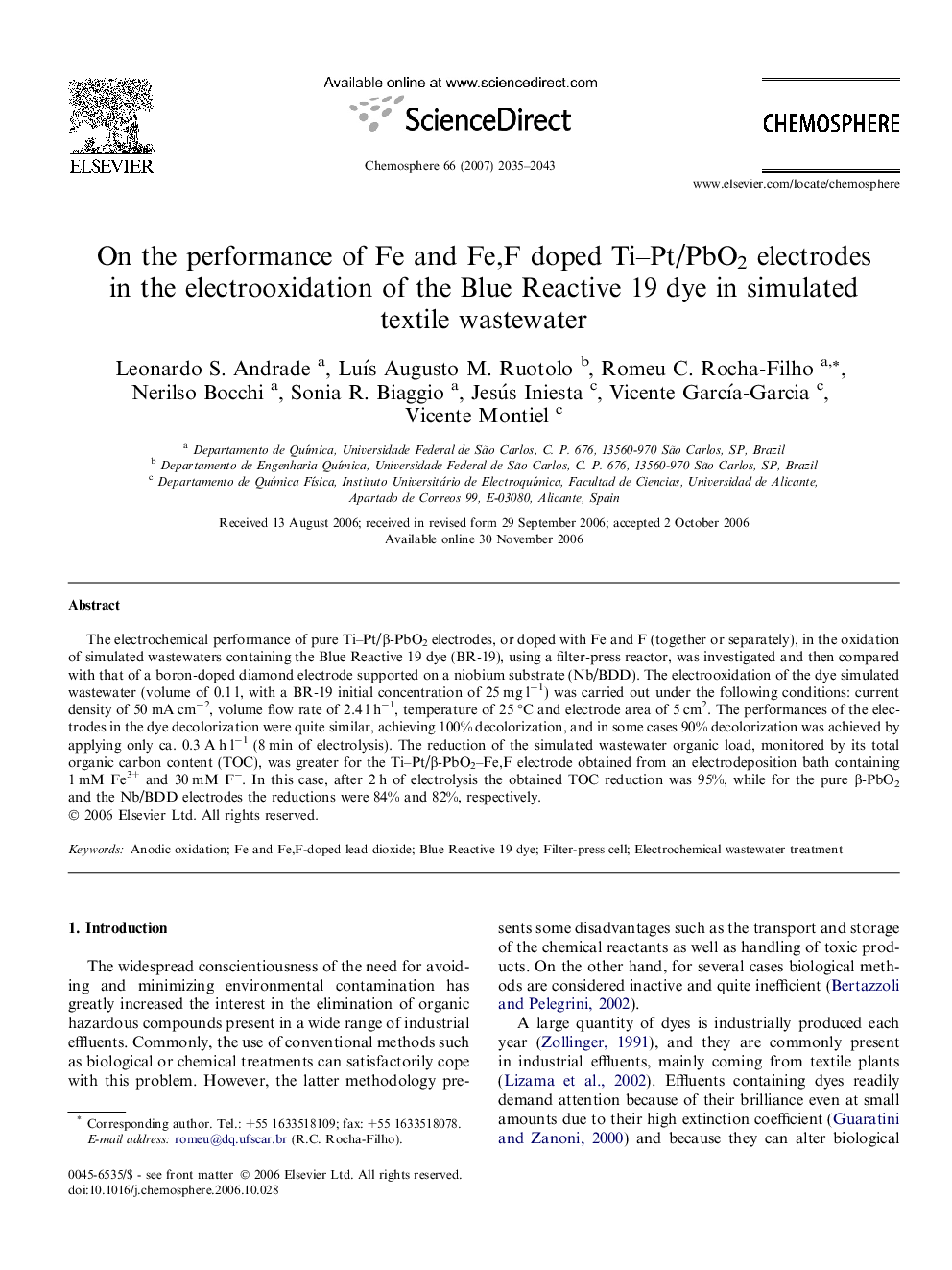| Article ID | Journal | Published Year | Pages | File Type |
|---|---|---|---|---|
| 4415975 | Chemosphere | 2007 | 9 Pages |
The electrochemical performance of pure Ti–Pt/β-PbO2 electrodes, or doped with Fe and F (together or separately), in the oxidation of simulated wastewaters containing the Blue Reactive 19 dye (BR-19), using a filter-press reactor, was investigated and then compared with that of a boron-doped diamond electrode supported on a niobium substrate (Nb/BDD). The electrooxidation of the dye simulated wastewater (volume of 0.1 l, with a BR-19 initial concentration of 25 mg l−1) was carried out under the following conditions: current density of 50 mA cm−2, volume flow rate of 2.4 l h−1, temperature of 25 °C and electrode area of 5 cm2. The performances of the electrodes in the dye decolorization were quite similar, achieving 100% decolorization, and in some cases 90% decolorization was achieved by applying only ca. 0.3 A h l−1 (8 min of electrolysis). The reduction of the simulated wastewater organic load, monitored by its total organic carbon content (TOC), was greater for the Ti–Pt/β-PbO2–Fe,F electrode obtained from an electrodeposition bath containing 1 mM Fe3+ and 30 mM F−. In this case, after 2 h of electrolysis the obtained TOC reduction was 95%, while for the pure β-PbO2 and the Nb/BDD electrodes the reductions were 84% and 82%, respectively.
